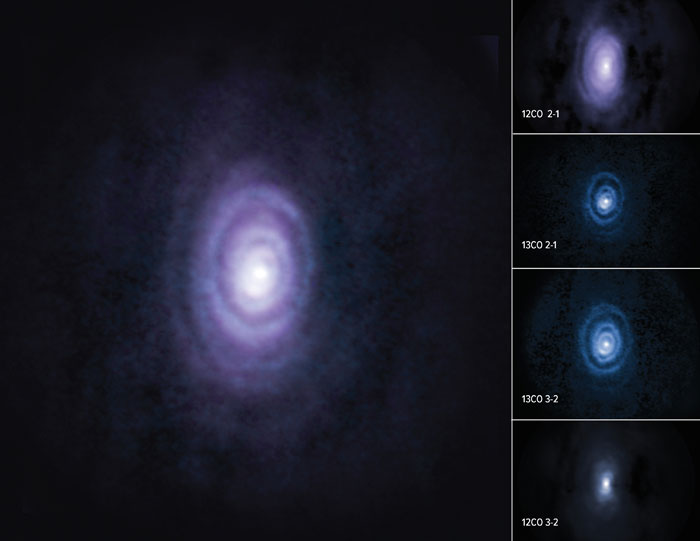Our Sun's days are numbered. In about 5 billion years the Sun will expand into a red giant, casting off its outer layers before settling down to become a white dwarf.
It's the inevitable fate of most sunlike stars, and the process is well understood. But as a recent study shows, there are still a few things we have to learn about dying suns.
This recent study looks at a star known as V Hydrae or V Hya for short. It's a red giant star about 1,300 light-years away with a mass roughly the same as the Sun. It's what the Sun might look like in a few billion years.
There are, however, a couple of things that make it different from our home star.
For one, it has a companion star. The companion is too faint for us to see, but based on the motion of V Hya, we know it is likely a red dwarf star that orbits V Hya once every 8.5 years.
For another, V Hya seems to be dying in an unusual way.
In its current state, V Hya is categorized as a Mira variable star. It varies in brightness by about 1–2 magnitudes every 530 days, give or take. This is typical for dying red giant stars. As they fuse heavier elements in their core trying to survive, red giants often enter a period of oscillation, driven by the heating and cooling of the core.
What's more unusual is the fact that it is also a carbon star. This means that carbon fused in its core has been dredged up to the atmosphere of the star. So when astronomers look at V Hya's spectrum, they see a strong presence of carbon.
Basically, the star's atmosphere is very 'sooty'.
 (ALMA (ESO/NAOJ/NRAO)/S. Dagnello (NRAO/AUI/NSF))
(ALMA (ESO/NAOJ/NRAO)/S. Dagnello (NRAO/AUI/NSF))
Above: Shown here in composite, these outflowing rings and the diffuse arc structure of the sixth ring are moderately visible in the 12CO carbon isotope emission line and become well-defined in views of the 13CO carbon isotopes.
These two characteristics combined make V Hya an Asymptomatic Giant Branch star or AGB. About 90 percent of sunlike stars will enter an AGB period toward the end of their life.
Astronomers have generally thought that the AGB epoch is a gradual process of stellar death, where the outer layers of the star are cast off over a period of about 100,000 years. After which, the remaining core collapses into a white dwarf. But V Hya shows this is either partly or sometimes incorrect.
If an AGB gradually cast off its outer layers, then we would expect to see an ever-expanding nebula known as a [planetary nebula](/post/cold-embers/) surrounding most white dwarfs. And we do see many planetary nebulae as the remnants of sunlike stars.
But observations by the Atacama Large Millimeter/submillimeter Array (ALMA) show that V Hydrae isn't creating such a nebula.
Instead, it has been casting off thick rings rich in carbon. The star has ejected six rings over the course of about 2,100 years.
The team also observed jets of gas ejected from the star perpendicular to the rings. This suggests that V Hya undergoes an unusually active period every few hundred years, which is very different from the common AGB model.
This period of active bursts is likely short lived compared to the full AGB epoch, so astronomers are fortunate to capture a dying star in this stage. It isn't known whether most AGB stars experience such active periods, or whether V Hya is particularly unusual.
To solve that mystery, it will take more observations of other dying red giant stars.
This article was originally published by Universe Today. Read the original article.
